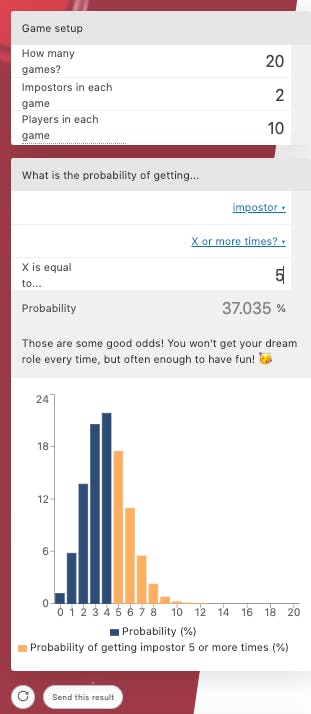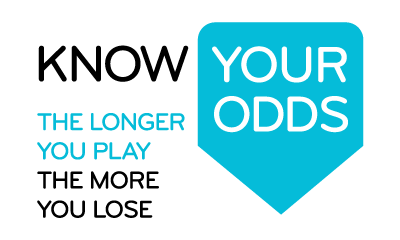- In simplest terms, odds are a way of expressing the relationship between the number of favorable outcomes in a given situation versus the number of unfavorable outcomes. Usually, this is expressed as a ratio (like 1: 3 or 1/3). Calculating odds is central to the strategy of many games of chance, like roulette, horse racing and poker.
- People have been betting on horse races since horses have been running. Betting on the outcome of formal horse races can be fun and profitable if you know what you’re doing and can beat the odds. Betting on Horse Racing For Dummies offers lots of info to help better your odds including advice on what.
These assignment is about how to play two dice Bunco therefore discuss the advantages of understanding probabilities when playing dice games. Further, describe the relationship between odds and probability
First, choose whether you want to use Moneyline American, Fractional (UK) or Decimal (European) odds. In the 'Odds' box, type in the odds you have been given. Remember to enter then in the correct format. For 'Stake', type in the amount of money you wish to bet. Over the last 10 years, I went from being able to close four-figure deals to being able to close seven-figure deals. It took me a long time because no one taught me to play the man (using emotions) instead of playing the odds (using logic). Here is a step by step approach that will help you to play the man and not the odds: Step #1: Make them. Odds, are given as (chances for success): (chances against success) or vice versa. If odds are stated as an A to B chance of winning then the probability of winning is given as P W = A / (A + B) while the probability of losing is given as P L = B / (A + B). For example, you win a game if you pull an ace out of a full deck of 52 cards.
How to play two dice Bunco:Relationship between odds and probability
For this Critical Thinking assignment, you will apply concepts from probability theory to real-world scenarios.
Bunco is a group dice game that requires no skill. The objective of the game is to accumulate points by rolling certain combinations. The game is played with three dice, but we will consider a simpler version involving only two dice.
How do you play two dice Bunco?
There are six rounds, one for each of the possible outcomes in a die, namely the numbers one through six.
Going clockwise, players take turns rolling two dice trying to score points. Points are usually awarded as such: 21 points if both dice match the current round number (a “Bunco”); five points are awarded if both dice match each other, but do not match the current round number (a “Mini Bunco”).
Finally, one point is awarded for a single die matching the current round number.
If points are scored, the player gets to roll again, continuing to add to their score. If no points are awarded, the player’s turn ends and the dice are passed to the next player.
At the end of the game, the winners get prizes for accomplishments such as the highest score, the lowest score, or the most buncos.
Part I: Complete the following steps assuming the round number is 6:
How to play two dice Bunco:Relationship between odds and probability
What is the probability that the player rolls two distinct numbers different than six or rolls exactly one six (no points or one point)?
Then, what is the probability that the player rolls two of the same number but no six, i.e., two 1s, or two 2s, and so on (five points Mini Bunco)?
What is the probability that the player rolls two 6s (21 points Bunco)?
Compute the total of the probabilities found in the three previous questions.
If the player wins a dollar for every point, he/she gets and losses three dollars for getting no points, what are the expected winnings or losses on each roll?
Part II: Based on your work in Part I, discuss the following:
Describe the sample space when rolling two dice once. How can identifying all the elements of the sample space help you answer the questions in Part I?
How to play two dice Bunco:Relationship between odds and probability


Determine if “rolling two different numbers different than six” or “rolling exactly one six” are mutually exclusive events. Justify your answer. Explain how this information can help you answer question one, Part I.
Describe the relationship between odds and probability. Explain how you can use the result in question three, Part I to find the odds of getting a Bunco in a single roll.
What does the result found in question four, Part I imply about these events? Explain how you have used the answers to questions one and two, Part I to get the answer to question three, Part I.
Interpret the answer to question five, Part I.
Discuss the advantages of understanding probabilities when playing dice games.
Think of another scenario where to use probabilities . Discuss the advantages of using probabilities in the context of the scenario you created.
Requirements:
You must submit two files for this assignment. The first file should contain the computations, graphs, diagrams, etc., associated with the questions in Part I. This file may be formatas a number list of answers.
Unless stated in the problem, a narrative discussion is not required, but you must provide enough information to show how you arrived at the answer.
Detailed Instructions
|
Click here to request for this assignment help
If you're playing with a friend who is much stronger or weaker than you, it can be a lot more fun for both parties to play an balanced / odds game!

To play an odds game, your opponent must be your friend.
Balanced / odds games are unrated!
First, go to Play and choose Play Onlinethen choose Custom Game:
Next, click on 'Random' to instead choose your opponent. The option for an odds game will not be present until after you choose your opponent:
What Are The Odds Ideas
Choose which friend you want to play. If they are online and on your friends list, you should see them near the top of the list of friends but you can also scroll through the list of friends, or type a username into the search field to find your opponent:
Once you've chosen your opponent, if they are of a very different rating than you, you should see a popup like this:
Click on 'Standard' and then choose 'Balanced / Odds game' from the dropdown:

Next, choose what kind of odds! The default is Auto balance, which will have the computer decide what to do based on the rating difference. If you want to choose your own odds, click on 'Auto Balance' and then scroll through the list of options:
What Are The Odds Dares
Once you've decided, then click 'Play' and your challenge will be sent!
